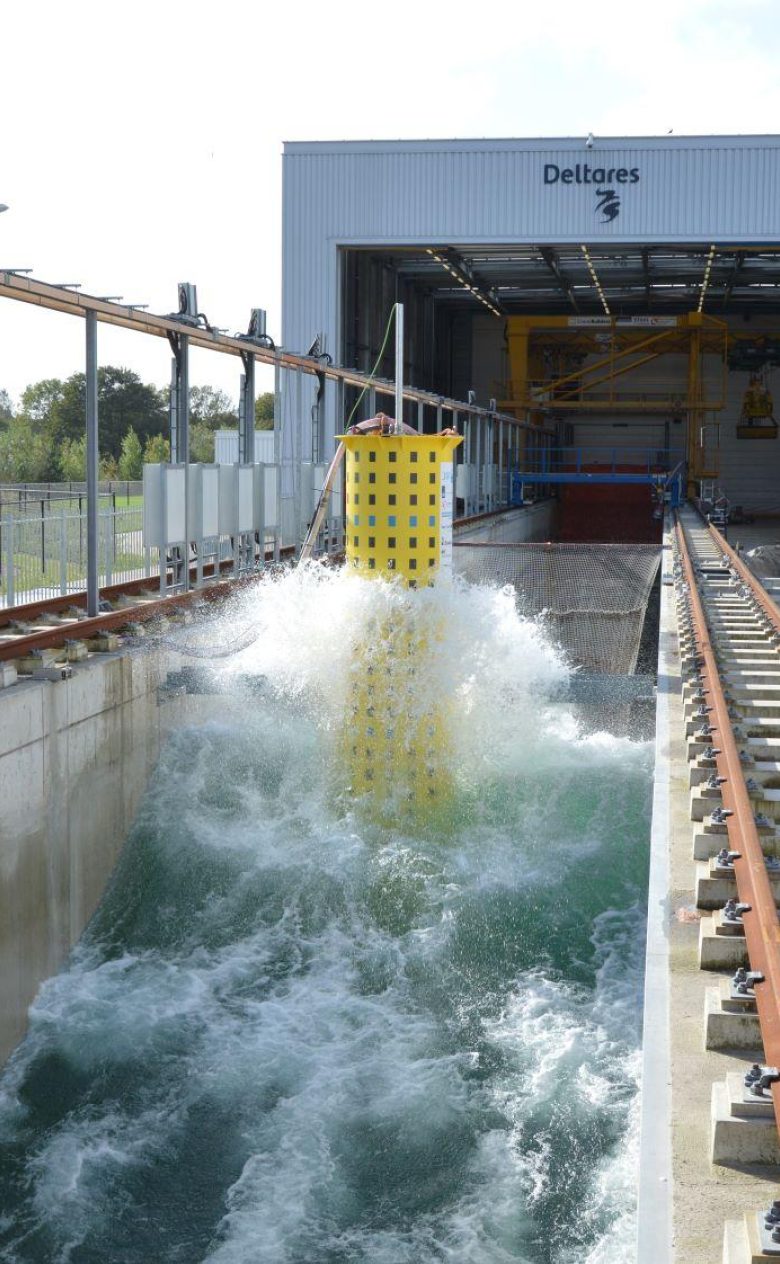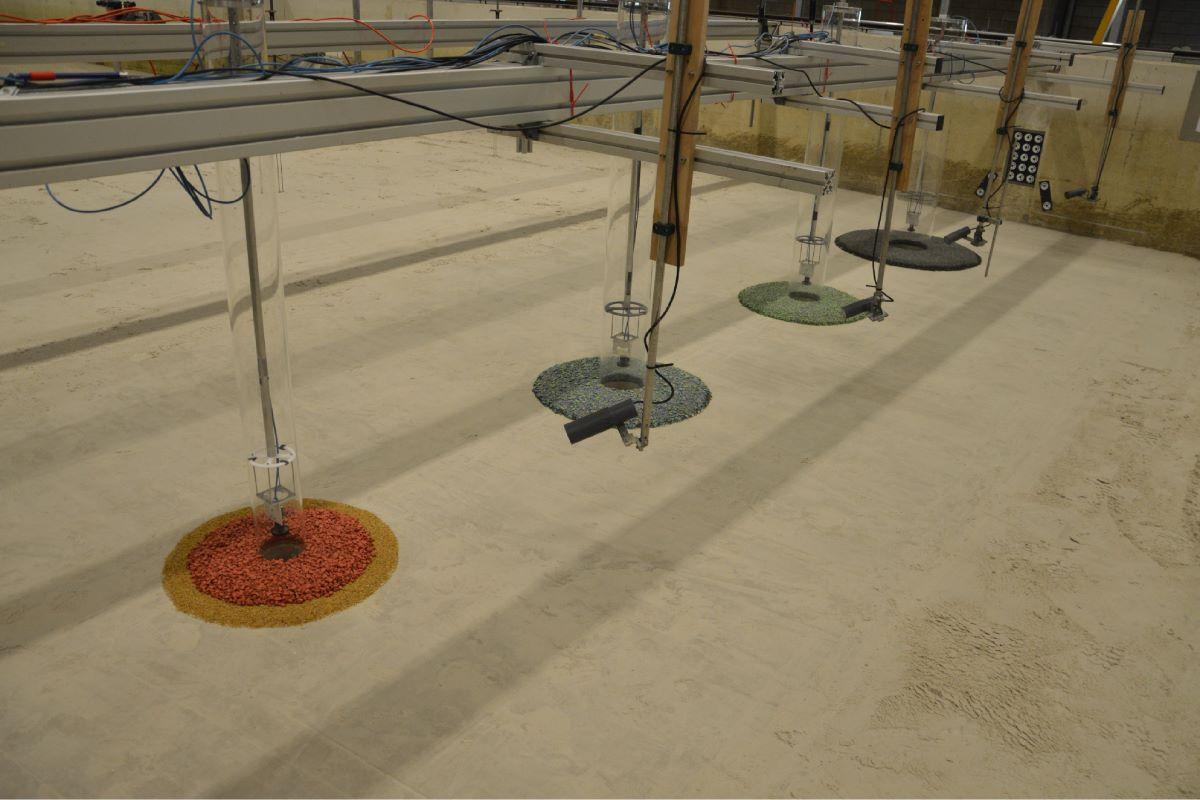Protective measures offshore structures
What is the most suitable and cost-effective scour protection method for each situation? An overview of measures can now be found in the Handbook of Scour and Cable Protection Methods. This manual is the result of the multi-year research programme Joint Industry Project HaSPro, in which more than 20 companies worked together, initated and coordinated by Deltares.

Download the Handbook of Scour and Cable Protection Methods
The Handbook of Scour and Cable Protection Methods contains generic and science-based design guidelines to prevent erosion around offshore structures. Wash-out of sand or stones by wave action is a common problem in, for example, the foundation of monopiles for offshore wind farms. The handbook provides support in the design process of so-called soil protections to ensure foundation stability. Thus, the most appropriate and cost-effective method can be chosen for each situation.
Solutions
As there are no good and generally applicable design formulas and guidelines for soil protection in offshore structures, but different solutions are applied with varying success by different parties, the need arose for scientifically based and clear guidelines. In JIP HaSPro, more than 20 companies jointly investigated different solutions. The research focused on the performance of protection under extreme conditions, but also on other relevant aspects of the design cycle, such as installation, use and maintenance, and ecological impact. The focus of the material in the manual and the underlying research is on the foundations of monopiles for wind turbines, but can also be used for other types of foundations.
New standards and innovation
Within JIP HaSPro, a large number of scale tests were carried out to understand the behaviour of soil protections exposed to extreme conditions. An in-depth analysis of these tests led to a deformation model that can be used in the design of protections composed of loose rock. In addition, new standard stone grades were defined together with quarries and contractors. Realistic guidelines regarding achievable accuracy during offshore installation were also defined together with parties actually doing this installation.
The project also had room for innovation: several alternative protection methods for quarry stone were investigated, such as artificial vegetation. Finally, this project investigated for the first time possible nature enrichment on bottom protections, for example by installing artificial reef elements.

Public access
In the project, existing methods based on loose rock were optimised and new innovative methods for impoundment mitigation were investigated and prepared for offshore field tests. The physical model test and analysis reports and physical model test data of the behaviour of the protections will soon be publicly available free of charge. The project team will ensure that the data are easily findable, accessible, interoperable and reusable (#FAIR). Through a webinar and discussions with certification body DNV, the solutions from the guide will be tested against practice and adapted if necessary.
Deltares and the project participants hope that the manual will further expand international knowledge on scour protection. At the same time, by making the data publicly available, the project team wants to encourage other institutes to do the same. Thus, knowledge base can be jointly expanded through cross-validation. Even more important is gaining insight into the actual behaviour of installed scour protection offshore. Data on this is badly needed so that predictions from the lab can be juxtaposed with reality.

